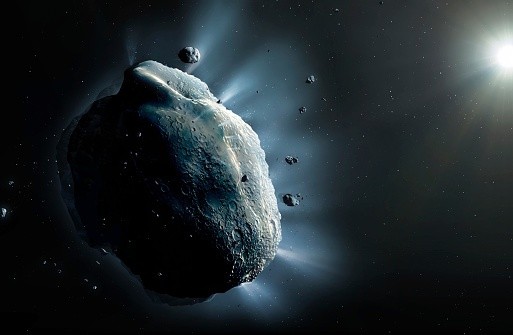NASA will be going "Armageddon" soon. But for this one, there won't be any nukes, Bruce Willis, or Ben Affleck.
The agency will be conducting their so-called Double Asteroid Redirection Test (DART) mission, whose main goal is to literally slam into an asteroid and attempt to redirect its orbit, writes Space.com.

Its official launch window begins on November 24 and will continue until February 2022. The DART mission will be launched on a SpaceX Falcon 9 rocket from California's Vandenberg Space Force Base.
The asteroid, however, won't be a massive one. It's a relatively small space rock called Dimorphos, which is around 170 meters (560 feet) in diameter. It's also one of the smallest ever asteroids to actually have a permanent name as per the IAU.
NASA's DART mission will be literally the Earth's first-ever attempt at a planetary defense system--the ones that so often gets talked about in pop culture.
It won't come cheap, however, as the mission itself costs a whopping $330 million. While this price tag pales in comparison to other NASA missions (the Mars rover Perseverance cost the agency $2.7 billion), it's still a really astronomical price tag.
NASA hopes to get what they pay for with DART, though. Because if it works, it will be the first-ever time that Earth actively defended itself from a potential asteroid impact.
The DART mission was first announced almost a month ago. According to LiveScience, its main objective is to crash into Dimorphos at a maximum speed of 15,000 mph (24,000 km/h).
This will completely destroy the spacecraft, but NASA is hoping that they'd at least make a dent in the asteroid's orbit and eventually deflect it.
How Will The NASA DART Mission Work?
NASA calls the DART spacecraft a kinetic impactor because that's literally its job. However, it's still technically an experiment since Dimorphos is not really a threat to Earth--or at least not yet.
One of the biggest issues with crashing a spacecraft into an asteroid at high speed is accuracy. There are two issues here: the speed of the spacecraft itself and the fact that asteroids are never stationary.
So to make sure that DART finds its target, NASA equipped the spacecraft with an onboard camera called DRACO. The camera will also be aided by autonomous navigation software to increase the chances of a direct hit.
Once the spacecraft finally crashes on Dimorphos, the agency hopes to change its overall orbit speed by less than one percent. This isn't much, but it will be enough to make the asteroid easily observable on Earth due to its orbital period being thrown off by several minutes.

A Long Journey
The DART mission is scheduled to traverse roughly 7 million miles from its launch platform in California to the Didymos binary near-Earth asteroid system, where Dimorphos is located.
The entire journey will end in roughly late September 2022, according to official NASA estimations.
Related Article : NASA to Develop an Asteroid Hunting Space Telescope to Watch for Possible Threats to Earth
This article is owned by Tech Times
Written by RJ Pierce
ⓒ 2025 TECHTIMES.com All rights reserved. Do not reproduce without permission.




